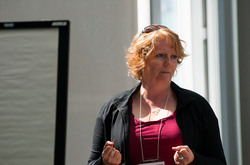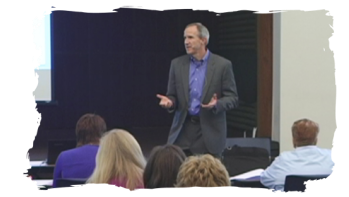
This is part two of a three-part series on the goal of any public speaker. Read part one here. The second goal of any speaker is to educate the audience about the subject the speaker has been asked to address.
Now, there's a big difference between educate and inform. You don't really need to inform, because we can all look it up on Google. Educating is another matter.
To educate is to enlighten, offer new perspective and turn on the light bulbs over the heads of the audience members. Education is highlighting important trends and trying to explain what's happening. Education is interacting with the audience to make sure attendees are grasping what the speaker has to say.
Now, there's a big difference between educate and inform. You don't really need to inform, because we can all look it up on Google. Educating is another matter.
To educate is to enlighten, offer new perspective and turn on the light bulbs over the heads of the audience members. Education is highlighting important trends and trying to explain what's happening. Education is interacting with the audience to make sure attendees are grasping what the speaker has to say.
The common misconception about education, of course, is that it's going to be very boring. You can see the droopy eyelids and people trying to stifle a yawn.
One of the best things a speaker can hear after a speech is, "Oh, I didn't know that," or, "Wow, I'm glad you explained that."
Common misconception
The common misconception about education, of course, is that it's going to be very boring. You can see the droopy eyelids and people trying to stifle a yawn.
That's where the talent of the speaker comes in. You don't merely recite facts and statistics. Again, there's Google for that. Rather, you try to bring the audience along from point A to point B and instruct them about the impact of your message.
Stories and illustrations
The best way to do that is through stories and illustrations. Stories are instantly appealing because everyone loves a good story. Stories can make dry information come alive. The stories can be about the speaker, customers, colleagues or from the speaker's research. Stories come in all shapes and sizes. The key is to use them.
Natural process
This goes back to the first goal of the speaker: to entertain. If you're entertaining with your material, the process of education will occur rather naturally. Some in the audience may not even realize they learned something.
Don't be afraid to educate the audience. They'll thank you later. Have you found this to be true for you?
WesBleed.com | Twitter: @wesbleed
Common misconception
The common misconception about education, of course, is that it's going to be very boring. You can see the droopy eyelids and people trying to stifle a yawn.
That's where the talent of the speaker comes in. You don't merely recite facts and statistics. Again, there's Google for that. Rather, you try to bring the audience along from point A to point B and instruct them about the impact of your message.
Stories and illustrations
The best way to do that is through stories and illustrations. Stories are instantly appealing because everyone loves a good story. Stories can make dry information come alive. The stories can be about the speaker, customers, colleagues or from the speaker's research. Stories come in all shapes and sizes. The key is to use them.
Natural process
This goes back to the first goal of the speaker: to entertain. If you're entertaining with your material, the process of education will occur rather naturally. Some in the audience may not even realize they learned something.
Don't be afraid to educate the audience. They'll thank you later. Have you found this to be true for you?
WesBleed.com | Twitter: @wesbleed


 RSS Feed
RSS Feed
